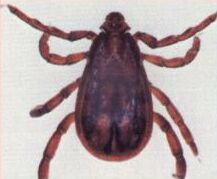The Texas Animal Health Commission (TAHC) marked an ominous anniversary July 3 by expanding the preventive fever tick guarantine area in south Texas by 307,000 acres, after the dangerous livestock pests were detected on cattle outside quarantine areas in Starr and Zapata counties. Fever ticks, capable of carrying and transmitting deadly “tick fever” to cattle, have been detected on livestock or wildlife on 139 Texas pastures during the past 12 months.
“In July 2007, the first preventive quarantine was established—39,325 acres in Starr County—to enable the US. Department of Agriculture’s Tick Force and the TAHC to inspect and treat livestock moved from the area, get ahead of the fever tick and push it back across the quarantine line,” said Dr. Bob Hillman, Texas’ state veterinarian and head of the Texas Animal Health Commission, the state’s livestock and poultry health regulatory agency. “Now, a year later, we have more than a million acres under preventive quarantines in Starr, Zapata, Jim Hogg, Maverick, Dimmit and Webb counties, in addition to the half-million acres in the permanent fever tick quarantine zone that runs alongside the Rio Grande, from Del Rio to Brownsville.”
The enlarged preventive quarantine includes portions of Starr, Zapata counties and a small area in Jim Hogg County. It is bounded on the north by Texas Highway 16, from its intersection on the west with US Highway 83 to its eastern junction with Ranch Road 649. Ranch Road 649 is the eastern boundary to its southern intersection with US Highway 83, which is the western boundary stretching northward to the intersection with Texas Highway Continue reading Fever Ticks Claim a Million Acres in Texas
